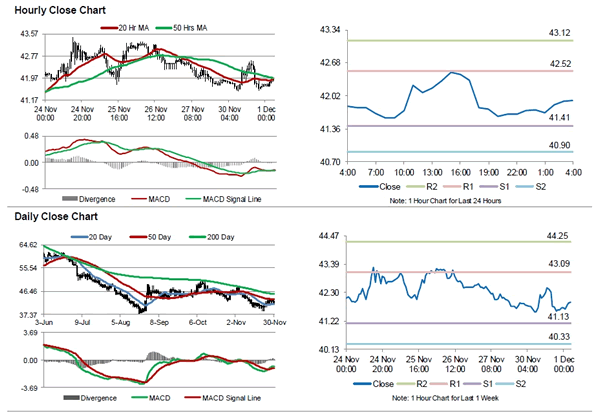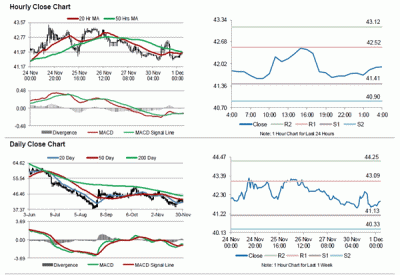Currently, two key levels stand out regarding crude oil, and they are very close to one another. The Fibonacci Support on WTI/Crude Oil on the August-October range stands at $42.76. The Fibonacci pulling back on 61.8% is common; however, in case the bounce doesn’t materialize or both a break and the daily close below this level, we would soon be looking to move toward the lows similar to the ones at the end of August. The other level would be the low at $42.57 that happened two weeks ago. The late October low below $42.57 is likely to quiet the bulls for the time being and with good reason. On the downside, immediate targets could register near 78.6% of Fibonacci support from August through October, ranging at $40.54. For the bulls, this temporary encouragement would happen if the 61.8% Fibonacci support added to the $42.57 2-week low might hold. We also saw a break above the recent low of $45.09, the height of the weekly opening range.
The recent fail in pushing higher tells us the market is not willing to bid so far, yet observing the other commodity markets sends an important message: the base metals and energy still wait for significant support. If the support holds, a bounce could materialize soon. There is very little reason, however, to bet against a strong US dollar according to the current evidence. The US dollar’s story is important to understand the common occurrence of the strength of the USD and the commodity weakness of markets. Therefore, there are no changes in terms of dollar strength or oil weakness resulting from rising inventories; the charts will most likely point to lower prices.
The unprecedented dollar growth being witnessed all around the world has resulted in the falling prices of commodities such as oil, and precious metals such as Gold, and copper. This situation has caused a significant drop in the value of the currencies of most developing countries, including China, Brazil, South Africa and India. There is no indication to when this trend will stop, but for now the devastating effect has led to higher unemployment rates in developing countries and inflation rates are set to rise even further in the coming years. Most developing countries are now looking for alternative ways to cope with the harsh realities of the strengthening dollar against their currencies.






